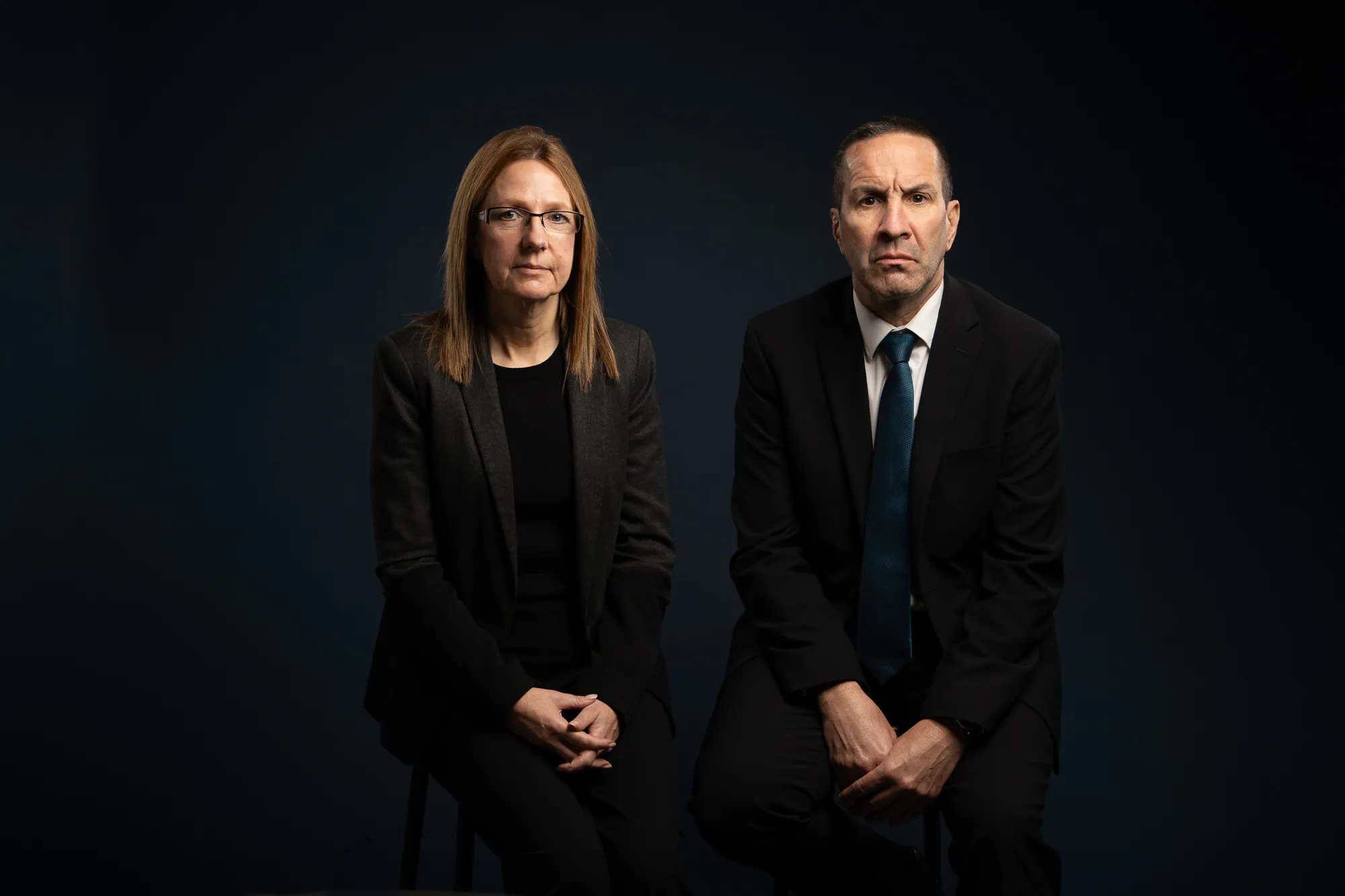Inside the Investigation: How investigators recreated the fatal collision between a freight ship and a fishing trawler
By Megan Davies and Fiona Potigny
Copyright jerseyeveningpost

Before dawn on 8 December 2022, two vessels cut across the still waters of the Channel.
It was two weeks before Christmas, and a cold, dark night – but, despite the cold, the weather was dry and clear, there was little wind, and the moon was shining brightly. It was a peaceful and tranquil time to be out, with both boats moving easily on the water.
Trawler L’Ecume II had just left Jersey, bound for a regular, favoured fishing area called the Long Banks.
Around the same time, the 126-metre freight ship Commodore Goodwill steamed in from Guernsey, heavy with cargo.
One was a wooden boat built in the 1960s, crewed by three men. The other was a steel ship, nearly 200 times its size.
At 05:35, the two ships collided.
L’Ecume II sunk to the bottom of the seabed, its crew never to return home.
Those lost were skipper Michael Michieli (62), a seasoned fisherman with many decades of experience who had returned to Jersey from England to raise his family, and his two crewmen from the Philippines, Larry Simyunn (33) and Jervis Baligat (31), working seasonal jobs to support loved ones back home.
It was their first and second seasons with Mr Michieli respectively.
Just 14 minutes before the collision, Mr Baligat had sent a WhatsApp message: “Bro, key is on the door step…there’s still leftover chicken from last night…. We’ve already left for sea.”
It was the last anyone heard.
The impact triggered one of the Island’s largest ever search-and-rescue operations in living memory.
For days, the waters yielded nothing. Then, on 12 and 13 December, the bodies of Mr Simyunn and Mr Baligat were found. Mr Michieli remained lost beneath the waves.
There had never been in indication that there was an emergency or problem on board the L’Ecume II and no transmissions had been made on its radio.
Questions hung heavy: how could this have happened, and why?
Operation Nectar
The answers would take years.
What was soon after dubbed Operation Nectar became one of the most complex investigations ever undertaken by the States of Jersey Police: 290 statements taken, 169 witnesses interviewed, 786 documents recorded, and over 1,000 exhibits seized.
Leading the investigation was Andy Shearwood, with Detective Inspector Christina Mclennan, who also heads up the Criminal Investigations Department, as his second-in-command.
The task at hand was enormous – from digital forensics teams to crime scene inspectors and support teams keeping logistics moving. Every single police department was involved at some stage along the way, Det Insp Maclennan noted.
Specialist help was also drawn in from across the UK: disaster victim identification units, forensic and interview advisors, marine recovery teams from Magellan, Herbosch Kier and Seatech, the Maritime and Coastguard Agency, Ports of Jersey, the Government, and the Law Officers’ Department.
Among those to be specially drafted in was Mr Sheerwood himself.
He had recently retired from Thames Valley Police, where he managed murder investigations and investigated road deaths.
While he didn’t hear about the collision at the time, he “vividly” recalls seeing videos of the Haut du Mont tragedy, an explosion on Pier Road which claimed 10 lives, in the national media.
Little more than a week later, his phone rang.
“I had a phone call from what was the National Police Coordination Centre, which deals with managing resources that are needed to support other forces on a national scale, and it was simply a question of, ‘Would you be interested? Would you be able to help?’… Here I am, three years later.”
While his background was not specific to maritime incidents, he noted that “quite a lot” of his homicide expertise carried over to the L’Ecume II case, particularly in reconstructing how the night in question unfolded.
“All of the reconstruction material that was used based on some of the data we’d obtained… certainly featured heavily in telling the story to the jury,” Mr Shearwood explained.
When the Commodore Goodwill came into the harbour on 8 December, having searched in vain for survivors, police officers were already waiting on the pier to board the ship.
Mr Shearwood said: “At that stage, it’s really, really early doors, and it’s more about getting an understanding of what’s happened and securing evidence as quickly as possible.
“It’s things like ensuring that the crew that have been on the bridge haven’t been drinking alcohol, so doing evidential breath tests with them.
“It’s securing data from the ship, or looking to secure data from the ship, recording, effectively, a crime scene as it is in closer timeframe to when the incident happened.
“So there’s bodyworn video footage from those first attending officers.
“When it comes to the interviews at that stage, we weren’t aware that there were three fatalities from from the collision and the crew of the L’Ecume II had all been lost.
“But we needed to understand as early as possible how the collision had happened.”
At the start, the investigation was led by Ports of Jersey, though it was always clear that it would be passed on to the States police.
Understanding what happened
The team used reconstructions – several of which were later shown in court – to map the vessels’ routes and the moments directly before impact.
360-degree photography with the help of equipment from Guernsey Police recreated the view from the Goodwill’s bridge – exactly as second officer Lewis Carr (30) and able seaman and lookout Artur Sevash-Zade (35), the only two crew on the bridge at the time of the collision, would have experienced it.
Both investigators described “a steep learning curve” as they delved deeper into the case – knowing their “port” from their “starboard”, the array of radar and GPS technology, and the intricacies of maritime law and on-board protocls.
The UK’s Maritime and Coastguard agency offered “really good support” and sent a a senior investigating officer to assist.
“We learned so much about shipping, shipping law, the intricacies what sort of evidence we could look for and where, and it was just so, so helpful,” Mr Shearwood said, emphasising the “rare” nature of the probe.
“There won’t be many SIOs that have investigated fatal maritime incidents where there’s this suspicion of criminality.”
The recovery
L’Ecume II effectively shattered on impact and sank.
For months, its wreck lay at the bottom of the sea – and, with it, the skipper.
Recovery was deemed vital both for “humanitarian and evidential purposes”, the then-Deputy Chief Minister, Kirsten Morel, said at the time.
“Clearly it’s really important for families to know what’s happened and to recover their loved ones. That was really important to us,” Mr Shearwood said.
“But also, the boat itself can give valuable clues.”
There was a hope that they could recover the fishing lights or the fuse board to establish whether the fishing lights were on or off at the time of the collision – a critical factor which would have impacted how the two vessels were supposed to cross each other.
But the wreck lay 50 metres down.
For recovery divers, the risks were immense: near-zero visibility, “cold, fast, fast underwater currents” – and the risk of becoming caught in the trawler’s nets.
Det Insp Maclennan explained: “For people looking on the outside, the weather looked lovely. It would be difficult to understand that divers weren’t able to reach where they needed to go because it was too dangerous, but it was.”
“The wreck was an entrapment risk in any event,” Mr Shearwood added.
They needed to wait for a five-day window of good weather and an attempt in April was deemed too dangerous.
“We wanted to make sure that all of that recovery was done properly and that [Mr Michieli] was recovered with dignity,” Mr Shearwood said.
The moment of recovery was significant – as much on an evidential level as an emotional one.
Ripples felt across the world
The case itself had rocked the island, but none more so than the maritime and Filipino communities, who had both lost much-loved members.
While detailed forensic work and evidential gathering were core to the Nectar operation, so too was offering support.
“We have fantastic neighbourhood teams here that link into those communities and feedback in feelings and emotions… so we’ve been putting out regular updates as to how the investigation’s been progressing, to make sure everybody’s kept informed,” Mr Shearwood said.
Family liaison officers played a crucial role, especially for families overseas.
And that continued as the trial unfolded.
“We’ve been able to speak to those families in the Philippines on a regular basis, and we have translation services with us at the courtroom as the trial has been going on,” Shearwood said.
“The Balligat family, sadly, weren’t able to travel. But we’ve been providing them with daily updates of what’s been happening in court that’s all been translated into their native language, and twice a week, they’ve been getting written updates going out, as well as contact with our family liaison officers.”
With the case now at an end, Mr Shearwood and Det McLennan said they wanted to express their gratitude to all who had assisted along the way.
“There wouldn’t be any department in the States of Jersey Police that wasn’t involved in this investigation,” McLennan said.
“It’s a huge, huge task, and this investigation is one of the largest that Jersey Police have had. So they’ve done an absolute fantastic job on it. It’s not an easy feat whatsoever.”
“A massive thank you to them,” Mr Shearwood added.



